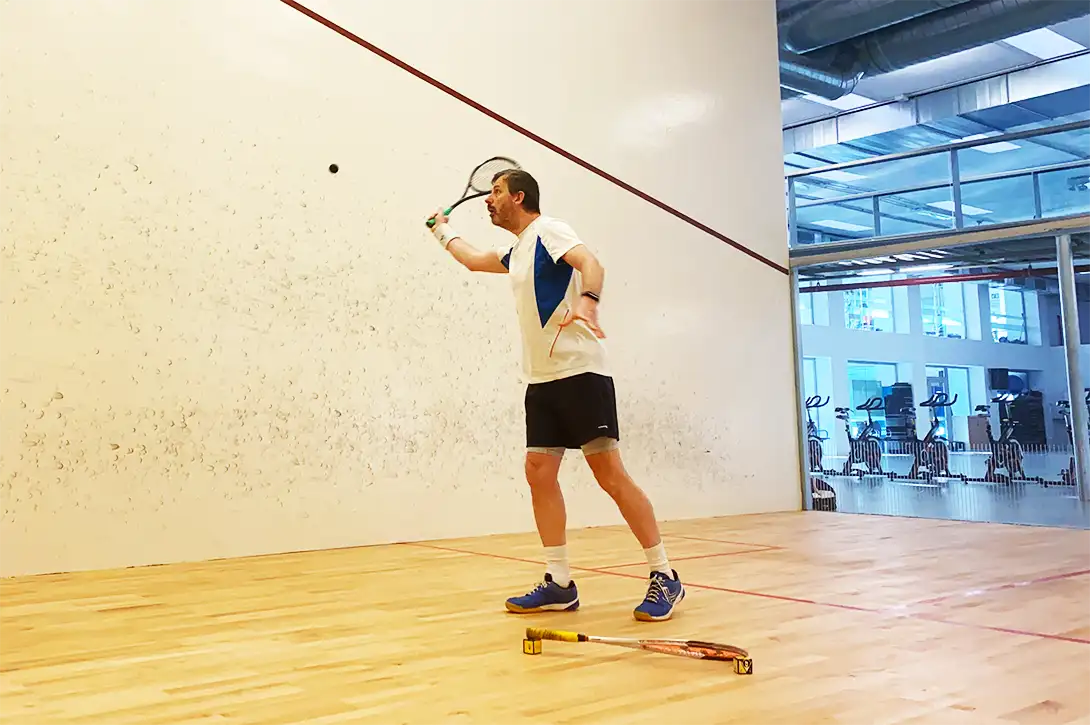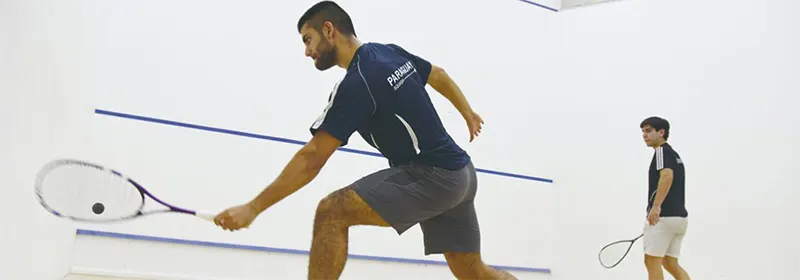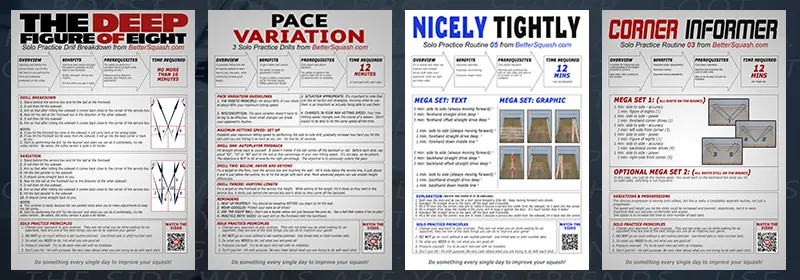29 June 2022 / 3-Min Read / Translate
Most squash players believe that solo practice is something you do because your partner is late or has cancelled. For most, it’s a boring at worst and not fun at best. I fully understand that point of view, but with a small change in your approach to solo practice, it can be one of the most challenging parts of your training.

Me posing and pretending to hit perfect volley kills
The first thing to understand is that you must commit to performing solo practice for at least 6 sessions, and those sessions should really be once-per-week to fully benefit. Any less than 6 sessions and you might not have had time to improve and if it is not once-per-week or about once every ten days then the space between each session is too much.
Work mostly on your weaknesses not your strengths. Too many people perform drills that they are good at and enjoy, and that’s fine as long as you spend more time working on the things that you need to do. A good example is the figure of eight. It’s a drill that is fun to do and can be impressive to watch if you are new to squash. But unless you need to work on your volley timing, there might be other drills that are more useful for you.

How low can you go?
Too often, I’ve seen people advocate doing drills for 10 or even 20 minutes. It’s too long. It will actually have a negative effect on your skill acquisition. What will happen is that you will get tired and your technique will falter and you will essentially be teaching your body to do the drill the wrong way. It’s much better to do something for less time, more often, ideally with a sleep in between.
As mentioned above, don’t do any drill for too long. What I recommend is alternating between drills that require power with drills that require control or touch. There are plenty of ways of doing it, but if you stick to 3-minute drills, and rotate through say 6 different ones, alternated with the same power drill, that’s a 36 minute routine that will certainly not seem boring.
Another thing you can do to keep things interesting is to use targets and/or scoring. Instead of doing 3 minutes of one drill, do 3 minutes and keep score of how many targets you hit. Not only will you have a great workout for your fitness and skills, you will also add an element of competitiveness and concentration. I also like the system of setting a goal of X number of shots with no mistakes. If you do it, you move onto the next drill, if you don’t you have to count from zero. Keep the 3 minute limit though.

It's important to always concentrate on technique
To get the most from solo drills, you need to ensure that you are using the correct technique, otherwise you will be re-enforcing bad habits, even though in the short term you might see an improvement, in the long term you won’t. So if necessary, get coaching before committing to a lot of solo practice sessions. At first spend time improving your technique rather than worrying about how good your shots are.
I have created some training posters for you to use. They details everything you need to know about each routine. They are all high resolution and can be printed to A1 size or simply downloaded to your phone for reference when you need them. In addition, each poster has a QR code that links to a video explaining each routine. Here is a specific playlist of Solo Routines.

Some examples of the training posters available
Lastly, make sure you use the right ball. That might be a red dot, yellow dot or double yellow dot, it depends on you, the drill and the court conditions. use the ball that makes the drill fun and effective. Do not use a double yellow dot just because people tell you it’s the best ball to use. Use the ball that makes the routines the most effective for improving.